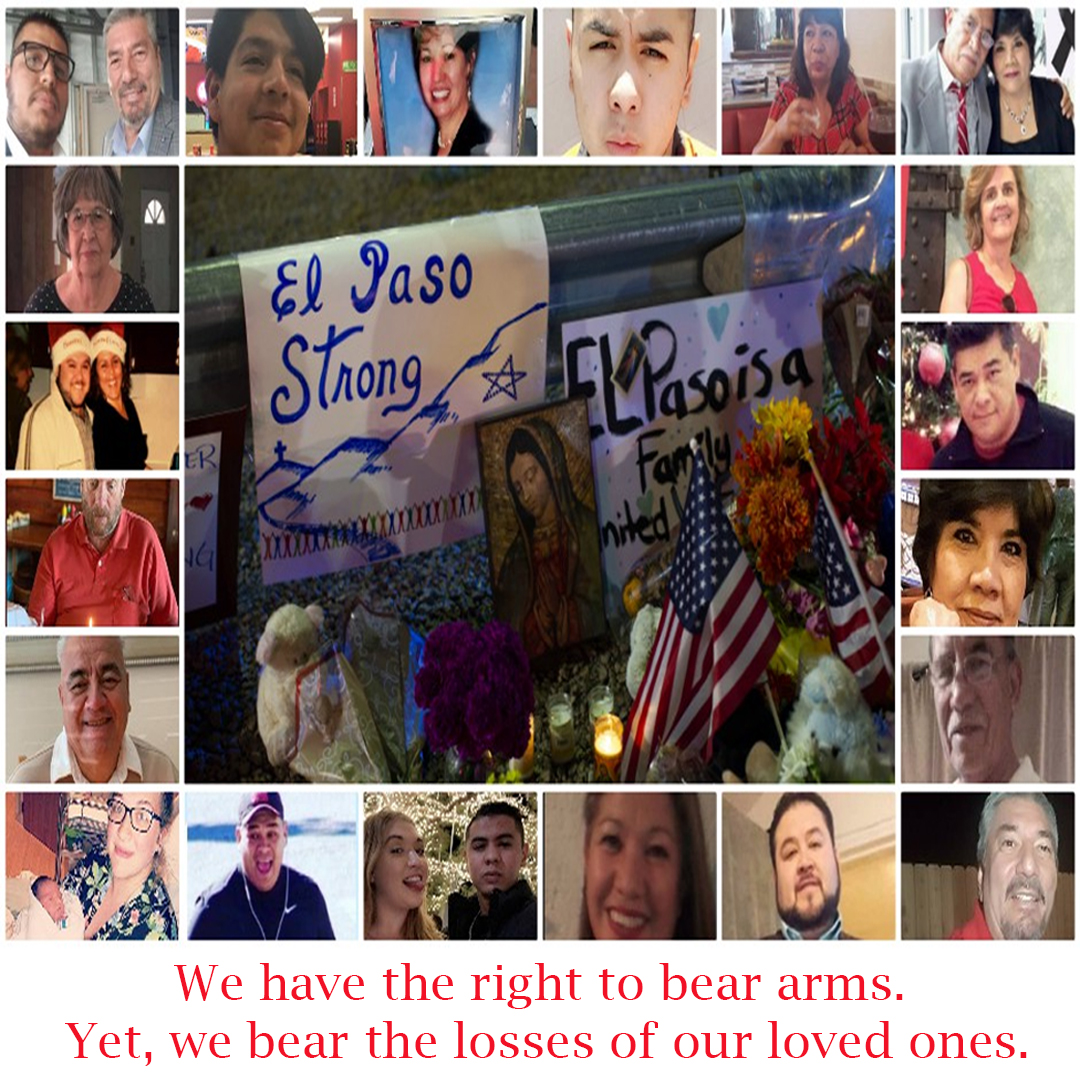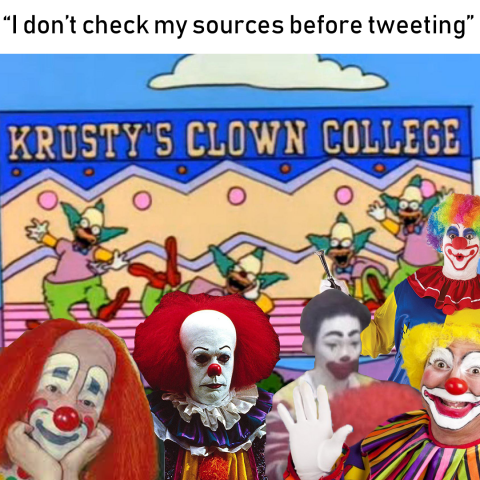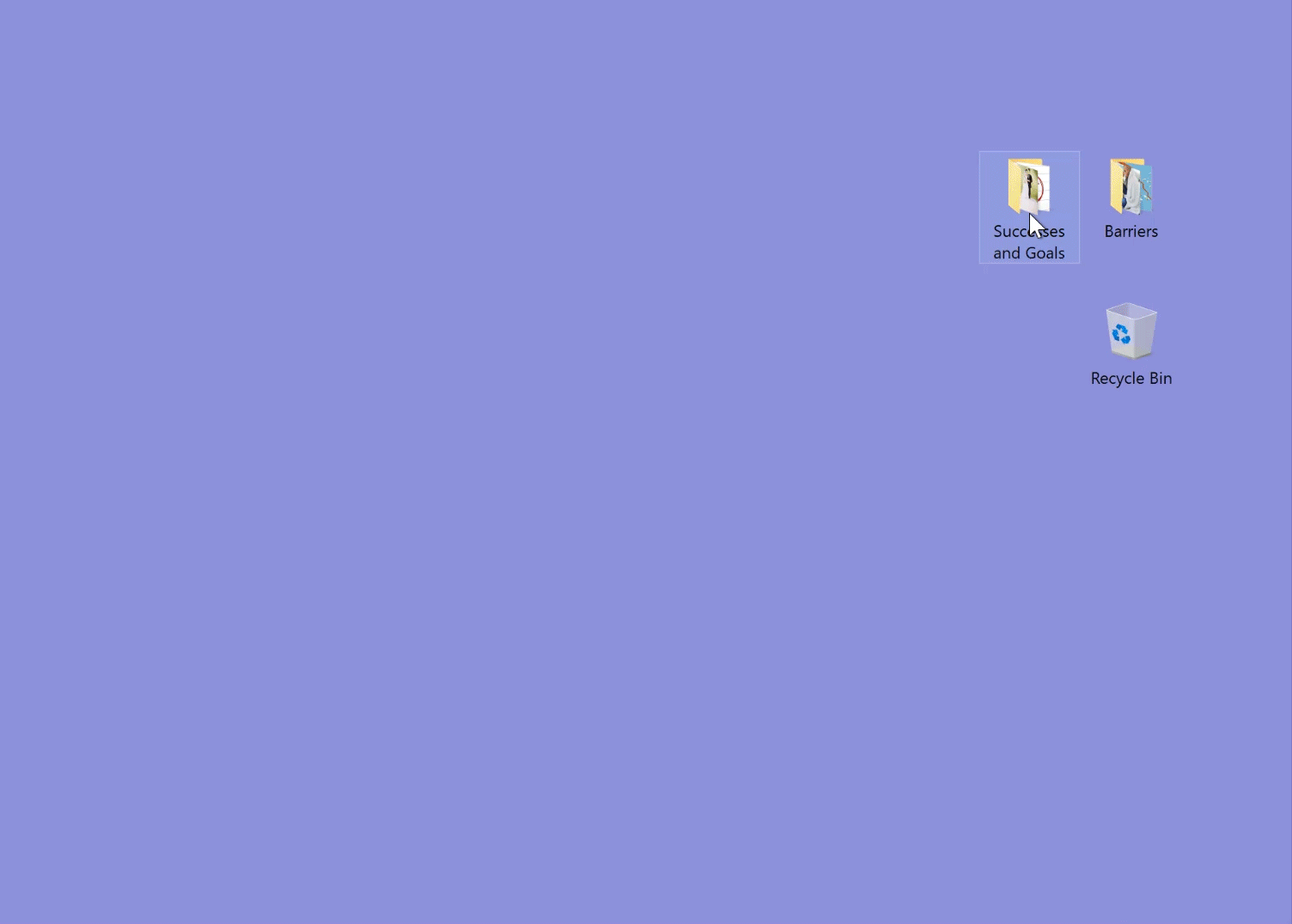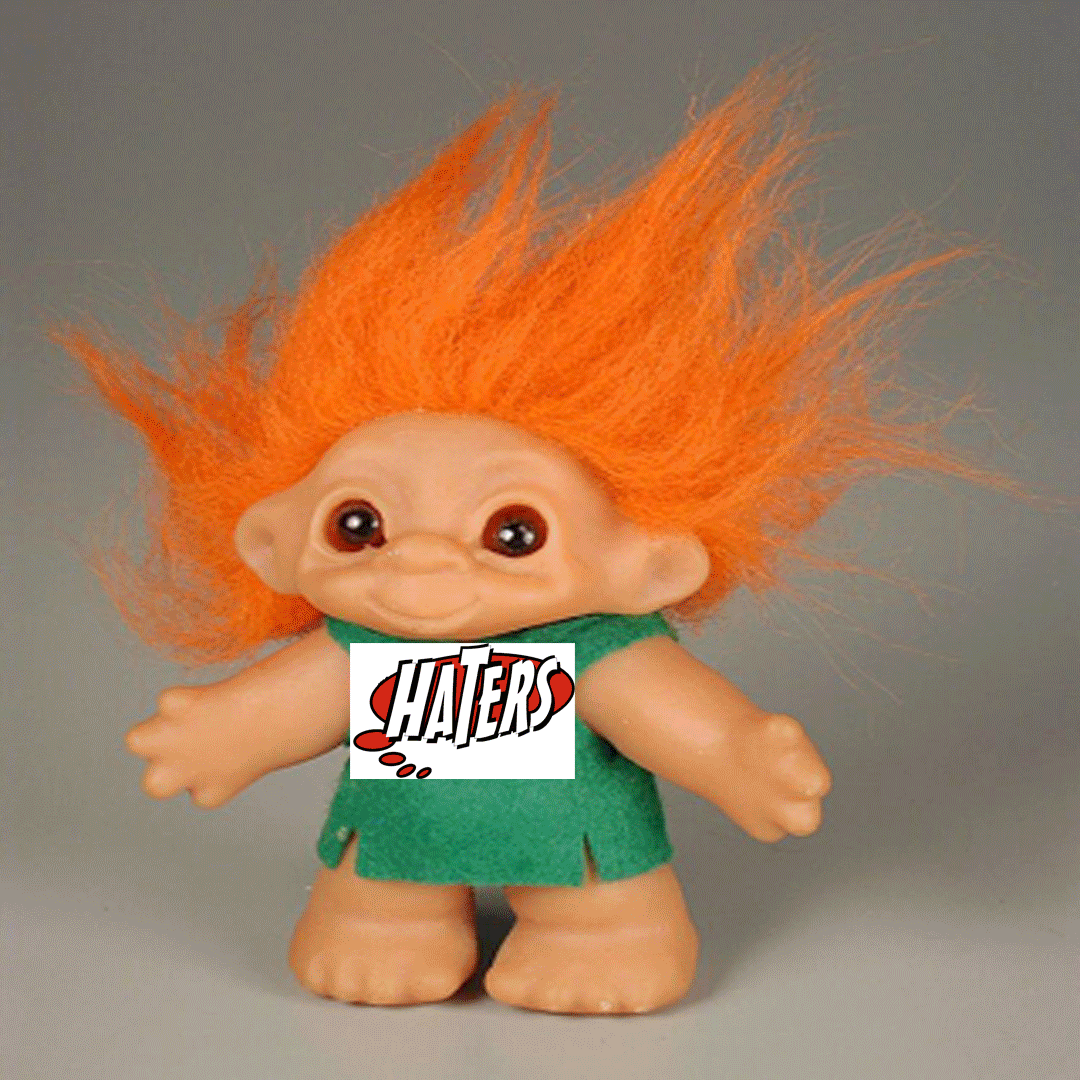ENGL 117 Portfolio
I read the title of this course, "Arguing on the Internet." The course title and brief description of the course intrigued me as I have noticed before taking this course that the internet has become a place for people to argue about topics. I noticed this through comments on social media. I wanted to learn why some arguments spread and trusted more than other types of arguments. I did not realize that I would have to create my own internet arguments. This interactive course has taught me how to use programs that have helped for me to convey my own arguments on the internet.
Critical thinking was applied throughout the course. Through class discussions based on the assigned readings, I had to use critical thinking to discuss the readings and how they applied to what was being taught in class. Also, in class there were many instances of analyzing examples of projects and discussing the strengths and weaknesses of the projects and how to improve upon those weaknesses. When we did exploration projects on learning how to use the new programs, this utilized critical thinking by being able to understand how to navigate each of the programs with limited experience and to develop new skills by learning how to use these new programs introduced in this course.
Collaboration was not done in the traditional sense of group projects; however, there were many instances of collaboration in this course. The podcast project involved collaborating with other peers in my class to produce a polished podcast talking about an issue on the internet. The podcast did not feature a formal, planned script. As a group, we had to figure out how we would convey our argument in an approximately 30 minute time period in a more informal manner. Also, there were times in class when we would speak with a partner about our projects and would provide feedback to each other on how to improve upon them. Also, collaboration had taken place on the internet by integrating other people's works into my own project such as taking swatches of colors to add to my app argument.
This class involved a lot of risk-taking. Before taking this course, I was not familiar with many of the programs. When creating the memes and GIFs, I had to do risk-taking throughout. I had to make a succinct argument using each of these forms. I was not sure if people would understand my arguments and the contexts I used to illustrate my arguments. Also, I had to use Adobe Photoshop for each of these assignments which I have never done before this class. I thought Adobe Photoshop would be impossible to master before undertaking the task of using Adobe Photoshop. I had to put myself out there and try to experiment with the complexities of Adobe Photoshop such as adding a shadow in the picture, creating the different layers of a meme, and adding various colors to the images.
First, the class taught me how to complete research in the digital humanities by conducting an analysis of tweets from a specific hashtag. Then, I learned how to form an effective argument composing an audio essay. Next, I collaborated with several peers in my class to create a podcast. After, I learned how to build an app that would provide an interactive experience to demonstrate the argument. Then, the class focused on creating succinct arguments using memes and GIFs. Lastly, I took some of the skills I learned in previous projects to form a portfolio video. This portfolio showcases how my knowledge has increased about how to argue on the internet and how to use programs that allow me to compose these arguments digitally.
Twitter Report

For the twitter report, I analyzed the hashtag, #BigPharma. I was interested in this subject as I wanted to understand how people felt about this industry and what people specifically felt were the main problems with this industry. Critical thinking was needed throughout the research process of compiling tweets. I used TAGS to gather all of the tweets from Twitter. Then, I filtered the tweets to include a two day period, no retweets, and written in a different language to use 119 tweets in my report. After, I had to categorize the tweets based on what is the tweet doing, rationale of the tweets, and the rhetorical approach used in order to analyze the tweets in a meaningful way. Before this class, it as challenging for me to synthesize information into discrete categories. Using critical thinking in this assignment helped me to learn how to start with a large amount of information and to then break it down into more simpler terms.
I found it interesting that many of the tweets focused on bashing and mocking the pharmaceutical companies. This could be attributed to how many of the users thought this tone would help convey their argument on how the pharmaceutical industry is impacting people and the country. Also, the analysis demonstrated how a high amount of the tweets were informing and reporting on the pharmaceutical companies. During this period of when the tweets were collected, the Johnson and Johnson court case on opioids occurred. This may have contributed to more people spreading the news on the results of the court case in order for people to be aware of the situation and to take on a more active role. This part of the analysis highlights how people are more likely to use Twitter either to compose arguments with a negative connotation or solely to report about situations.
I was surprised to see how many of the tweets incorporated ethos. This may have been due to how this topic allowed for people with more knowledgeable on the subject to voice the facts on this industry. These users may have wanted to spread the accurate news to users. Pathos was used in most of the tweets to express the negative sentiment regarding how corrupt and deregulated the pharmaceutical industry is and is affecting people's lives.
Here is a link to my Draft Twitter Report.
After receiving feedback from my professor, I tightened up the wording to elucidate my analysis. Also, I added directive phrasing such as, "According to Figure 1," in order for readers to better understand my research. This project has highlighted to me how in fact Twitter is a digital space where people can pose their arguments to thousands of users. Twitter enables people who want to form valid arguments to have the opportunity. However, I learned from this assignment that people have to question and research the veracity of the arguments before accepting it as true.
Here is a link to my Revised Twitter Report.
Audio Essay
For the audio essay, I had to create an argument about emojis have shaped communication on the internet. I first create the script of what I would say. In order to not have the listeners become disengaged, I had to include clips from other sources to contrast my voice to other voices to keep the listener engaged. I used Audacity which is a program that records audio, integrates audio clips, and edits audio. I have never edited audio before this course. It was challenging at first to use the program. However, the class assignments of creating sample projects allowed me to get acclimated with this program.
Here is my Draft Audio Essay.
Collaboration was involved in the audio essay project. I received feedback from my professor and two classmates. I also provided feedback to two classmates in my course. This feedback helped me finetune the volume of my recording and reduce background noise of the clips I retrieved. Also, I shortened some of the clips that had superfluous or repetitive content. This project allowed for me to learn from my peers to better understand how to create an audio essay in Audacity. I realized that hearing two of my other peers' audio essays and providing feedback actually helped me learn how to create a better audio essay. This occurred as I identified through my peers what worked and did not work. From there, I emulated what I found successful in my peers' audio essays with the inclusion of my individual take on it.
Here is my Revised Audio Essay.
Audio arguments in audio essays provide a logical and straightforward discourse. When completing an audio essay, you can follow a format such as introduction music, narration, clip, narration, clip, outro music. This provides the speaker more control over the topic. There is less variation and is mainly scripted when the narrator speaks. This form allows for the listener to become more immersed in the topic compared to a traditional essay format. I learned to take words on paper and to transform it by using an audio format. Overall, I now know how to use Audacity and will use this for future projects.
Podcast
I was assigned to work with four other group members to produce an approximately 30 minute podcast about an issue on the internet . First, each of the group members came up with ideas about topics on the internet. My group decided we should combine our ideas to form a central topic of how social media can have negative implications which included: addictive qualities, body image issues, businesses using targeted ads, and mental health outcomes. Each of the group members took one of the topics they were interested in exploring and became an expert on the topic. Then, we formed a brief outline of how the podcast would operate. Together, we practiced our podcast a few times to ensure it would run smoothly. We wanted the podcast to remain engaging by allowing each of the group members to speak on all of the topics and elicit a conversation format. This allowed for the experts on a certain topic lead the discussion while promoting the other group members to stay involved in each of the topics discussed.
Collaboration was involved in the creation of the podcast by brainstorming what to include in the podcast. There were times when some of the members had different perspectives on how we should go about the podcast. We addressed this challenge by making sure everyone's ideas were being heard about what they envision for this podcast. Our group decided the best way to complete this podcast was for all of the members of the group to respond to one another in the conversation developed for each subtopic in order to keep the ideas flowing successively. I had to learn that through this collaborative process that I had to forego some of my ideas and ownership in the podcast in order for everyone's ideas to be equally represented in the podcast. By accepting this reality, I actually was able to hear and to respond to other viewpoints that may have not been revealed if the podcast did not possess equal ownership. After the completion of the podcast, other classmates gave feedback on what were the strengths and weaknesses from my group's podcast.
Here is my Draft Podcast.
Then, I had to revise the podcast using Audacity. As I had more knowledge on Audacity, editing the podcast was easier than when I had to work on this program for the audio essay. However, this process of editing takes time to produce a polished product. I now have greater appreciation for people who work in this field and how detail-oriented and patient one must be when editing clips. I removed all of the background noises such as coughing, the bell tower ringing, etc. by using the noise reduction feature. I edited out all of the "ums" and other unnecessary words to clearly express what was said. In addition, I amplified the sound some of the group members' voices to ensure their voices could be heard by listeners.
Here is my Revised Podcast.
App Argument
I had issues ending the app. Initially, I posted words on two additional screens indicating that social media is not suitable for younger children. Through collaboration in class with the use of feedback from my professor and peers, they suggested that I make the end of the app continue on with the more realistic style that was previously done on the other screens. This experience taught me how other people may have ideas that I would have never considered. I have learned through this collaborative component that I should listen to people's ideas and to then run with those ideas to see if will help me make further create my product. I used critical thinking skills to determine what would be the best way to end the app and to provide the argument in a subtle yet conceivable manner. I decided to end the app by having the young user comment on the body image post by saying how can she diet to lose eight. Then, the user would complete a Google search on how to lose weight quickly with harmful websites appearing. The last screen would have the user click on one of the websites. Then, a text message from one of the user's friends comes on the screen to ask if the user can play outside. This text message symbolizes that the user should get off the phone and play outside with friends instead of being on social media and other negative internet websites. Applying critical thinking in this project has shown me how important piecing together ideas and to synthesize it into an interactive experience that is accessible to all people.
Here is my Revised Draft.
The app argument project demonstrated to me how an app allows for an interactive experience to occur and to have the ability to deliver a successful argument. People in today's society are more inclined to take part in an interactive experience. As a result, arguments should be made to tailor to people's desires for how they want to consume digital media. Also, this app argument has shown me that sometimes people will become more engaged to listening about an argument if it is more subtle and less blatant. The app provides a way to employ a subtle argument through the interactive experience that will allow people to want to listen to one's argument.
Memes
Original Memes

When I heard that I would have to make a meme, I was apprehensive at first. I thought memes were for making inane jokes as seen through the dank memes floating on the internet. However, I realized that in fact memes could be utilized for creating a compelling argument. This task involved critical thinking to make memes that were able to express an argument without the person needing to overthink it. Also, critical thinking was needed to figure out how to integrate the images, words, and other dimensions of the memes to form an effective meme. For the first meme, I chose to include an image of all of the victims from the El Paso Shooting. At the bottom, I put a play on words about the right to bear arms but yet guns result in bearing the losses of people that we love. The words were intently colored red to symbolize violence. I learned from critical thinking that it takes effort and time to synthesize how to piece together text, images, and other technical aspects to create a compelling argument.

For the second meme, I created three layers. The first layer is the background layer of a polluted beach. Then, I placed an image on top of the beach of a person throwing away a plastic water bottle in a trash can. For the third layer, I incorporated words using the popular template of someone saying something and then "me" saying something. The Earth says, "I cannot take this anymore." The individual, Me, says, "I don't have time." This meme was symbolizing how people should think about their apparently minimal actions actually contributing to the overall effects of pollution and global climate change. This involved critical thinking to ensure that all of the layers worked together and related to my argument. I took some risks in this meme by using the popular template structure. I have never used it before and was unsure whether it would work in this situation. I learned that sometimes taking risks may produce uncertainty of the desired outcome. However, it is important to try something out since it may produce a successful outcome than relying on traditional forms and ideas.

The final meme addressed an argument about the internet. I chose to create a meme about people relying on fake sources. I used critical thinking of how a meme could convey this argument. I found an image of the royal family of England and a person bowing down to them. I tried to represent the royal family as the fake sources that people have loyalty to and believe everything that is found on the internet similarly to how people have loyalty toward the royal family. I used text at the top of the screen saying, "All hail to the sources," to emphasize this point. It took some time composing this meme to ensure that all of the layers fit together to demonstrate the argument. Also, I took some risks by not knowing whether people would understand my context used for argument from people having allegiance to sources analogous to having loyalty to the royal family of England. As mentioned for my previous meme, taking risks is important when working with creative formats in order to compose an original and captivating product.

Revised Meme
I decided to revise my last meme as I felt that the argument could visually be represented better. I had to use critical thinking skills to determine how to further develop this argument. I removed the words adorned on the royal people, "Fact and Fake," as I felt it was not polished enough. I decided to include another layer of flaming fire to symbolize the inherent harm of being faithful to all sources without investigating their veracity. I reduced the opacity of the flaming fire image in order to still see the royal family. Then, in the bottom right corner I put a newspaper image heralding how fake news is rampant in our society. I also reduced the opacity of this image in order for the background to still be seen. I was not sure if by putting in these additional layers if the meme would become overcrowded with stimuli. I have seen memes before that have too many images, but I felt in my case all of the images tied together to connect to the overall argument I was trying to convey.
Classmate's Meme

I chose Alex's meme as best resonating with issues on the internet. This meme is highlighting how it is foolish not to check the sources before posting a tweet on an issue. This is being conveyed with the multitude images of clowns in the front. In the back of the meme, is an image from The Simpsons of Krusty's Clown College. This is symbolizing how clown college is seen as not scholarly and academic which therefore indicates that not checking the validity of sources is viewed. I thought the argument was expressed succinctly. Also, I liked how even though an image from The Simpsons show was incorporated, the argument did not rely on the knowledge of popular culture in order for the person to understand the argument.
I have learned that memes are not only used throughout popular culture but can also express an argument. Through the layers of images and words, memes convey a more creative format to illustrate an argument. In some cases, forming an argument using a meme will engage people to be more likely to view the argument. It is important when making a meme to ensure that all of the people viewing the content have knowlege on the context in order for the message of the argument to not become unclear.
GIFs
Original GIFs

Before this course, I was not familiar with GIFs. I thought GIFs referred to people making trite jokes on popular culture. I realized through this class that GIFs can help to make engaging arguments. This project involved critical thinking by deciding on how to compose the GIF and while still relating back to my argument. First, I had to use a program called SnagIt that records images and segments of videos and converts them into video clips. For the first GIF, I chose a video clip of a scene from YouTube where total chaos is occurring and people sitting at a meeting have their heads explode. After, I uploaded the SnagIt clips into Adobe Photoshop where I edited the video clip. Then, I placed text at the top that is featured at the end of the GIF saying, "Was the high worth it?" My argument for this GIF was to represent the harmful effects of smoking marijuana. I used the color green for the wording to further symbolize my representation toward the use of marijuana. Risk-taking was applied in this case as I was not sure if people would understand my argument as the images did not directly relate to drug use. Also, risk-taking was involved in this GIF as this topic is more contentious with people having strong opinions on the subject. However, I wanted to express my view on the argument instead of holding back. By feeling confident and trying out an argument that may have produced backlash from some people, I learned it is better to express one's own sentiment and perspective than to remain silent on how one actually feels about a topic.

For the second GIF, I had to compose an argument about the internet. I chose to do my argument about how people should not condone trolling behavior online as it leads to deleterious consequences to the victims such as feeling sad, isolated, etc. I used a still image of a troll doll to represent trolling online. I recorded the still image with the SnagIt program. Then, I recorded an image with SnagIt of people laughing. Lastly, I recorded an image of a person crying when looking at presumably hately comments online. To enrich my GIF, I employed bright colors on the people laughing. I added color to the images by adding adjustment layers on Adobe Photoshop and then added color balance to specific components of the images. This was done to suggest in reality how it feels when people laugh at you and it feels unescapable and embarrassing almost like a nightmare. Then, the last image of the girl crying I incorporated the color blue to evoke feelings of sadness due to the online trolling affecting her well-being.

The last GIF had to use screen features for the argument. I had difficulty of thinking how I could use technological programs while also thinking of a simple argument that a person can easily comprehend. I had to employ critical thinking to conceive of an idea. I screen recorded my desktop screen using SnagIt. I thought using folders would help express my argument. I created one folder for "Successes and Goals" and another folder for "Barriers." I compiled images relating to each theme. In the GIF, I open each folder up. After, I placed the "Barrier" folder in the recycling bin to highlight how people should not focus on barriers but to try to work toward their goals and put their best effort in life. I added some words after placing the folder in the recycling bin, "Keep pushing on," in order to ensure people would have insight into the argument without revealing it in its entirety. I never thought I would screen record something and had some difficulty running all of the parts I wanted to show on the screens smoothly but through practice I was able to form this type of GIF.
Revised GIF

I had to revise one of my GIFs. I decided that the internet argument GIF could use more detail to make it more intriguing to view. I decided to add an image of the word, "hater," on the troll doll. This was done to ensure that people would understand the context of my argument as not all people know about the word, "trolling," but would be more likely to know what the word "hater," means. I added the word "hahaha," above each of the people who are laughing to further visualize how victims feel with the taunting that is executed from trolling and online bullying behavior. I had to employ critical thinking to decide how much more visuals I should include before the GIF becomes distracting and cluttered.
Classmate's GIF

I chose Trent's GIF as best representing an argument about internet culture. This GIF highlights how a lot of the news that people search online in the United States is about mass shootings and gun violence. I like how the GIF uses a Google search to suggest how this is one of the most prevalent types of news in the country. This strengthens the argument by having the results appear when searching a broad search of, "news in america." This GIF effectively uses the screen format to showcase this argument.
Through this project, I have learned that the few seconds that are presented from GIFs evoke deeper meaning. GIFs enable a compelling argument to be expressed easier at times instead of writing it out such as the screen based memes. Also, people are used to viewing GIFs in their everyday lives. As a result, people will be more likely to want to view a GIF than a written argument. Likewise to creating a meme, it is important to ensure that people understand the context of how the argument is being framed in the GIF.
Portfolio Video
The last project of the course was creating a portfolio video. I discussed four of my projects: the twitter report, app argument, memes, and GIFs. I explained the process behind creating each of the projects. I discussed what I learned by completing each of the projects. I made a script to help the video run more smoothly without sudden breaks and superfluous words. I have never made a video before integrating images, screen recordings, and voice recordings. Despite becoming acclimated to other Adobe programs, I found this program arduous. Throughout the process of making the portfolio video, I used critical thinking to complete this project by figuring out how long my recordings should be, what additional features I should include on the screen such as arrows, and how to edit my clips to share my overall experience from this course. The way the program was structured made it hard to navigate and easily put the audio and screen clips in. There were times I had some of my audio recordings again to align with the screen clips and not disrupt other bits of the video. Using critical thinking while making the portfolio video has taught me how to synthesize everything I have done thoughout the semester into a final product. Before this course, I have never had the experience of compiling my work and producing a final product. This skill I learned will be benefiical for me as I am entering graduate school where the use of making portfolios is a vital component of the graduate program.
Here is my Draft Portfolio Video.
Collaboration had occurred by hearing input from my professor and other peers of what makes this type of video effective or not. We watched example portfolio videos in class and discussed strengths and weaknesses on them. Also, my professor provided comments on how to change my video including speaking slower, more informal tone, and reduce the opening clip. I learned from this collaborative experience how hearing other people's views of the product is important as it helps to see how to improve upon the project to form a desired final project. I changed the opening title to make it more alluring. Redoing many of the clips was time consuming, but I realized that the outcome was worthwhile.
Here is my Revised Portfolio Video.
The portfolio video has demonstrated to me how incorporating multimedia into a video with images and screen recordings along with my audio recording allows for an enriched experience. I tend to be more of a visual person and found to like how the portfolio video included visual aspects along with my narration. Also, having the visual aspects helps for people to understand what is being said.
Comments
Below are all of the comments that I composed throughout the semester.
Ignoring the Benefits of the Hashtag
The above comments that I contributed to the class website throughout the semester helped me to stay on track with the projects. Many of the comments involved working on preliminary aspects of the projects. For instance, the audio essay comment involved thinking of a topic and then fining external sources to include. Also, many of the comments involved risk-taking. Some of the comments involved showcasing sample projects that I had to create while learning as a beginner how to use these programs. Despite not having experience in these programs, I had to use my limited knowledge to create sample projects using the skills I learned in class. At times, I felt that my mini sample projects were not as good as they should be due to my limited knowledge at the beginning of learning a new program. However, this class has taught me that it is fine initially to have issues when working on new programs and through time and experience the projects will become more polished. Collaboration was also initiated when completing comments as I provided feedback to two of my peers about the audio essays. Also, I would hear other people's perspectives such as how they felt about Pizzagate and the use of the hashtags. I learned from this class that collaboration involves also listening to people's perspectives on topics and to then critically think about how that perspective differs from my own perspective and how I can learn from that perspective instead of thinking about topics in my idiosyncratic way. Furthermore, these comments have shown me through collaboration that I can learn from my peers from their ideas on a topic and how they are moving through with the process of the projects.
Conclusion
Overall, this class has taught me how to understand arguments created on the internet. I now know how to work with digital programs and to form arguments using them. The format of the course allowed me to feel comfortable sharing my projects with my professor and peers. Now, when I am on the internet I have a better ability to analyze the arguments expressed and how to construct arguments online. Through this course, I have developed critical thinking skills that have taught me how to synthesize when working on digital projects that is not usually applicable to other courses. Also, this class has expanded my view on collaboration by taking away some of my ownership in order to hear other people's perspectives and to then integrate those ideas into my projects. Lastly, risk-taking has been evident in my experience throughout this course by having to create projects where I had no previous background using these programs and to then become comfortable in experiencing the challenges I faced as I worked on each of these projects. I plan on taking these skills I have learned and applying them to how I create projects in my other coursework and when I work with people throughout my life.
